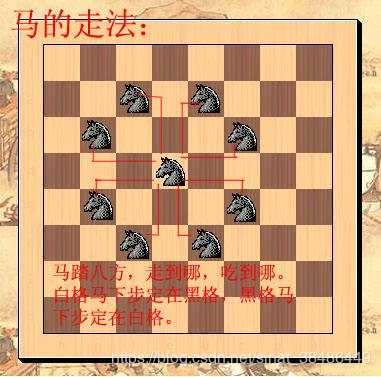1
2
3
4
5
6
7
8
9
10
11
12
13
14
15
16
17
18
19
20
21
22
23
24
25
26
27
28
29
30
31
32
33
34
35
36
37
38
39
40
41
42
43
44
45
46
47
48
49
50
51
52
53
54
55
56
57
58
59
60
61
62
63
64
65
66
67
68
69
70
71
72
73
74
75
76
77
78
79
80
81
82
83
84
85
86
87
88
89
90
91
92
93
94
95
96
97
98
99
100
101
102
103
104
105
106
107
108
109
110
111
112
113
114
115
116
117
118
119
120
121
122
123
124
125
126
127
128
129
130
131
132
133
134
135
136
137
138
139
140
141
142
143
144
145
146
147
148
149
150
151
152
153
154
155
156
| 版权声明:本文为CSDN博主「Crayondeng」的原创文章,遵循CC 4.0 BY-SA版权协议,转载请附上原文出处链接及本声明。
原文链接:https:
#include <iostream>
#include <stdlib.h>
#include <iomanip>
#include <queue>
using namespace std;
typedef struct
{
int x;
int y;
} Step;
Step step[8] = { {-2, -1}, {-1, -2}, { 1, -2}, { 2, -1}, { 2, 1}, { 1, 2}, {-1, 2}, {-2,1} };
typedef struct NextPos
{
int nextPosSteps;
int nextPosDirection;
int nextPosToMidLength;
bool operator < (const NextPos &a) const
{
return nextPosSteps > a.nextPosSteps && nextPosToMidLength < a.nextPosToMidLength;
}
};
int board[100][100];
int M,N;
bool check(int x, int y)
{
if (x >= 0 && x < M && y >= 0 && y < N && board[x][y] == 0)
return true;
return false;
}
int nextPosHasSteps(int x, int y)
{
int steps = 0;
for (int i = 0; i < 8; ++i)
{
if (check(x + step[i].x, y + step[i].y))
steps++;
}
return steps;
}
bool returnStart(int x, int y)
{
int midx,midy;
midx = M / 2 - 1;
midy = N / 2 - 1;
for (int i = 0; i < 8; ++i)
if (x + step[i].x == midx && y + step[i].y == midy)
return true;
return false;
}
void outputResult(int xstart,int ystart)
{
int num = M * N;
int k = num - board[xstart][ystart];
for (int i = 0; i < M; ++i)
{
cout<<endl<<endl;
for (int j = 0; j < N; ++j)
{
board[i][j] = (board[i][j] + k) % num + 1;
cout<<setw(5)<<board[i][j];
}
}
cout<<endl<<endl;
}
int posToMidLength(int x,int y)
{
int midx = M / 2 - 1;
int midy = N / 2 - 1;
return (abs(x - midx) + abs(y - midy));
}
void BackTrace(int t, int x, int y,int xstart,int ystart)
{
if (t == M * N && returnStart(x,y))
{
outputResult(xstart,ystart);
exit(1);
}
else
{
priority_queue<NextPos> nextPosQueue;
for (int i = 0; i < 8; ++i)
{
if (check(x + step[i].x, y + step[i].y))
{
NextPos aNextPos;
aNextPos.nextPosSteps = nextPosHasSteps(x + step[i].x, y + step[i].y);
aNextPos.nextPosDirection = i;
aNextPos.nextPosToMidLength = posToMidLength(x + step[i].x,y + step[i].y);
nextPosQueue.push(aNextPos);
}
}
while(nextPosQueue.size())
{
int d = nextPosQueue.top().nextPosDirection;
nextPosQueue.pop();
x += step[d].x;
y += step[d].y;
board[x][y] = t + 1;
BackTrace(t + 1, x, y,xstart,ystart);
board[x][y] = 0;
x -= step[d].x;
y -= step[d].y;
}
}
}
void horseRun(int xstart,int ystart)
{
for (int i = 0; i < M; i++)
for (int j = 0; j < N; j++)
board[i][j] = 0;
int midx = M / 2 -1;
int midy = N / 2 -1;
board[midx][midy] = 1;
BackTrace(1, midx, midy,xstart,ystart);
}
int main(void)
{
int x, y;
cout<<"请输入棋盘大小m*n|m-n|<=2 且 m和n都为偶数 且 m,n < 20 :";
cin>>M>>N;
cout<<"请输入马周游起始位置--横纵坐标0 <= x < "<<M<<"和0 <= y < "<<N<<" :";
cin>>x>>y;
horseRun(x,y);
return 0;
}
|
